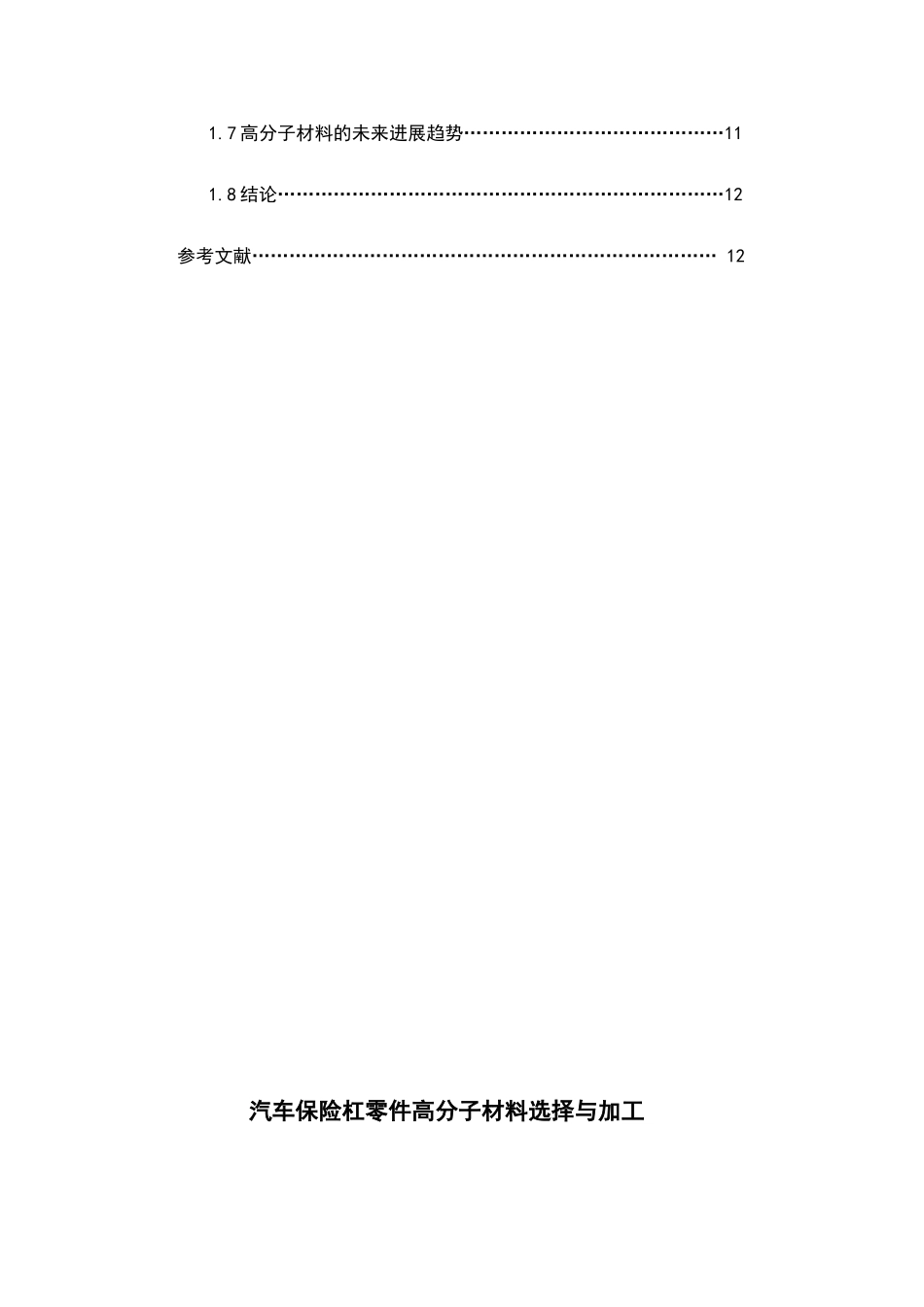摘要……………………………………………………………………30 引言…………………………………………………………………31 汽车保险杠高分子材料的选择与加工………………………… 31.1 保险杠的工作条件、失效方式及性能要求……………………3 1.1.1 保险杠的工作条件……………………………………3 1.1.2 保险杠的失效方式……………………………………4 1.1.3 保险杠的性能要求……………………………………4 1.2 零件材料的初步选择………………………………………… 5 1.3 汽车保险杠候选材料………………………………………… 5 1.3.1 聚丙烯分子结构,材料性能特点及类型………………5 1.3.2 聚氨酯分子结构,材料性能特点及类型 ……………6 1.4 候选材料的成形方法…………………………………………7 1.4.1 聚丙烯高分子材料的成形方法……………………… 7 1.4.1.1 注射成型……………………………………… 7 1.4.1.2 吹塑成型…………………………………… 7 1.4.2 聚氨酯高分子材料的成形方法……………………… 7 1.5 零件材料的确定……………………………………………… 8 1.6 提高所选材料性能的途径……………………………………91.7 高分子材料的未来进展趋势……………………………………111.8 结论………………………………………………………………12参考文献………………………………………………………………… 12 汽车保险杠零件高分子材料选择与加工摘要 随着对汽车燃料经济性和排放控制要求的提高。人们将目光集中在通过替代材料、改进设计或者先进的制造工艺找到制造轻量化汽车的方法。本文主要借助汽车保险杠,通过分析聚丙烯和聚氨酯,通过使用性能、工艺性能、经济性、可靠性、环境影响等方面的比较,找到目前最适合生产保险杠的材料以及未来高分子材料的未来进展动向。 Abstract With the improvement of automobile fuel economy and emission control requirements. People will be focused on by alternative materials, design improvements or advanced manufacturing process to find ways to make lightweight car. In this paper, with the aid of the bumper, through the analysis of polypropylene and polyurethane, through the use of performance, process performance, economical effi...


